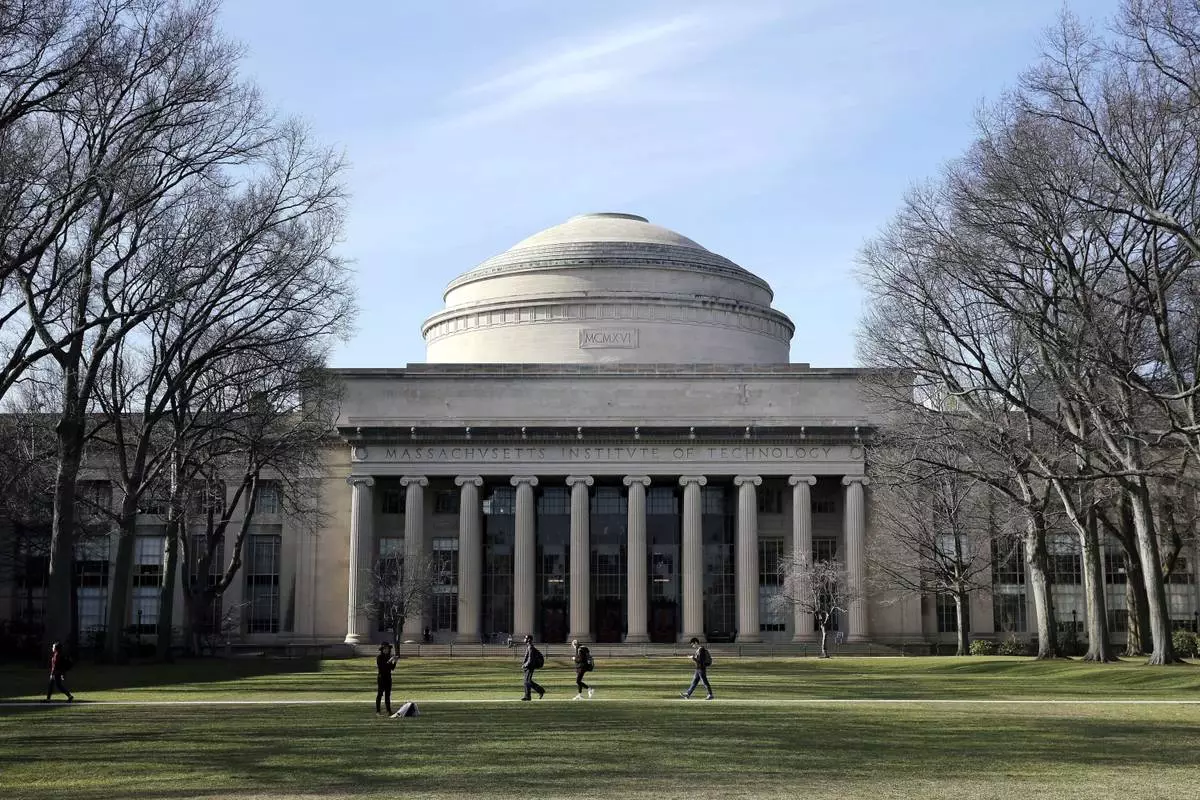WASHINGTON (AP) — The U.S. imposed sweeping sanctions Friday on hundreds of firms in Russia and across Europe, Asia and the Middle East, accusing them of providing products and services that enable Russia’s war effort and aiding its ability to evade sanctions.
Among those sanctioned by the Treasury Department were 60 Russian-based technology and defense companies, including three Russian financial tech companies. Also sanctioned were firms in Turkey, France and Hong Kong that act as suppliers to Russia-based Promtekh, a wholesale distributor of transportation equipment, and an ammunition procurement network connected to Italian and Turkish nationals, who also face sanctions.
Friday's action is the latest in a series of thousands of U.S. sanctions that have been imposed on Russian firms and their suppliers in other nations since Russia’s invasion of Ukraine in February 2022. The effectiveness of the sanctions has been questioned, especially as Russia has continued to support its economy by selling oil and gas on international markets.
Additionally, the State Department designated people and firms involved in Russia’s energy, metals and mining exports; drone production; subsidiaries of Russian state-owned nuclear energy corporation Rosatom; and people the U.S. says were involved in kidnapping Ukrainian children and making them identify as Russian.
The announcement comes one day before Ukraine’s independence day and as Ukrainian forces push into Russia’s Kursk region.
Friday's action is intended to make good on commitments that President Joe Biden made with his Group of Seven counterparts in Italy this summer to disrupt Russia's military supply chains and drive up costs for its war machine.
“Russia has turned its economy into a tool in service of the Kremlin’s military industrial complex," Treasury Deputy Secretary Wally Adeyemo said in a statement announcing the sanctions. “Companies, financial institutions, and governments around the world need to ensure they are not supporting Russia’s military-industrial supply chains.”
Earlier this year, the U.S. passed an aid package for Ukraine that allows the administration to seize Russian state assets located in the U.S. and use them for the benefit of Kyiv.
Shortly thereafter, the leaders of the Group of Seven wealthy democracies agreed to engineer a $50 billion loan to help Ukraine in its fight for survival. Interest earned on profits from Russia’s $300 billion in frozen central bank assets mostly in Europe would be used as collateral.

FILE- This June 6, 2019, file photo shows the U.S. Treasury Department building at dusk in Washington. (AP Photo/Patrick Semansky, File)
BOSTON (AP) — A study that explores the feasibility of using pigeons to guide missiles and one that looks at the swimming abilities of dead fish were among the winners Thursday of this year’s Ig Nobels, the prize for comical scientific achievement.
Held less than a month before the actual Nobel Prizes are announced, the 34th annual Ig Nobel prize ceremony at the Massachusetts Institute of Technology was organized by the Annals of Improbable Research magazine’s website to make people laugh and think. Winners received a transparent box containing historic items related to Murphy’s Law — the theme of the night — and a nearly worthless Zimbabwean $10 trillion bill. Actual Nobel laureates handed the winners their prizes.
“While some politicians were trying to make sensible things sound crazy, scientists discovered some crazy-sounding things that make a lot of sense,” Marc Abrahams, master of ceremonies and editor of the magazine, said in an e-mail interview.
The ceremony started with Kees Moliker, winner of 2003 Ig Noble for biology, giving out safety instructions. His prize was for a study that documented the existence of homosexual necrophilia in mallard ducks.
“This is the duck,” he said, holding up a duck. “This is the dead one.”
After that, someone came on stage wearing a yellow target on their chest and a plastic face mask. Soon, they were inundated with people in the audience throwing paper airplanes at them.
Then, the awards began — several dry presentations which were interrupted by a girl coming on stage and repeatedly yelling “Please stop. I'm bored.” The awards ceremony was also was broken up by an international song competition inspired by Murphy's Law, including one about coleslaw and another about the legal system.
The winners were honored in 10 categories, including for peace and anatomy. Among them were scientists who showed a vine from Chile imitates the shapes of artificial plants nearby and another study that examined whether the hair on people's heads in the Northern Hemisphere swirled in the same direction as someone's hair in the Southern Hemisphere.
Other winners include a group of scientists who showed that fake medicine that causes side effects can be more effective than fake medicine that doesn't cause side effects and one showing that some mammals are cable of breathing through their anus — winners who came on stage wearing a fish-inspired hats.
Julie Skinner Vargas accepted the peace prize on behalf of her late father B.F. Skinner, who wrote the pigeon-missile study. Skinner Vargas is also the head of the B.F. Skinner Foundation.
“I want to thank you for finally acknowledging his most important contribution,” she said. “Thank you for putting the record straight.”
James Liao, a biology professor at the University of Florida, accepted the physics prize for his study demonstrating and explaining the swimming abilities of a dead trout.
“I discovered that a live fish moved more than a dead fish but not by much,” Liao said, holding up a fake fish. “A dead trout towed behind a stick also flaps its tail to the beat of the current like a live fish surfing on swirling eddies, recapturing the energy in its environment. A dead fish does live fish things.”

Professor James Liao displays a stuffed fish while accepting a prize for physics for demonstrating and explaining the swimming abilities of a dead trout during a performance at the Ig Nobel Prize ceremony at Massachusetts Institute of Technology in Cambridge, Mass., Thursday, Sept. 12, 2024. (AP Photo/Steven Senne)

A team of researchers perform a demonstration during a performance showing that many mammals are capable of breathing through their anus while accepting the 2024 Ig Nobel prize in physiology at the Ig Nobel Prize ceremony at Massachusetts Institute of Technology, in Cambridge, Mass., Thursday, Sept. 12, 2024. (AP Photo/Steven Senne)

People in the audience throw paper airplanes toward the stage during a performance at the Ig Nobel Prize ceremony at Massachusetts Institute of Technology in Cambridge, Mass., Thursday, Sept. 12, 2024. (AP Photo/Steven Senne)

FILE - Students walk past the "Great Dome" atop Building 10 on the Massachusetts Institute of Technology campus in Cambridge, Mass, April 3, 2017. (AP Photo/Charles Krupa, File)














